 This is the story of Henry “Red” Erwin who served in the CCC in Alabama and went on to earn the Medal of Honor in the Pacific Theater. We’ll probably never know for certain how Red’s CCC experience impacted his later life or if it was even partly responsible for his singular act of heroism, but we all know that the CCC played a meaningful part in millions of men’s lives, and while they didn’t all go on to earn the Medal of Honor, they did work together to form the backbone of what is now known as “The Greatest Generation.”
This is the story of Henry “Red” Erwin who served in the CCC in Alabama and went on to earn the Medal of Honor in the Pacific Theater. We’ll probably never know for certain how Red’s CCC experience impacted his later life or if it was even partly responsible for his singular act of heroism, but we all know that the CCC played a meaningful part in millions of men’s lives, and while they didn’t all go on to earn the Medal of Honor, they did work together to form the backbone of what is now known as “The Greatest Generation.”
Hard times made a man out of Henry Eugene Erwin at an early age. Born in Docena, Alabama in 1921, his father died when Henry was just 10 years old. As the oldest of several children, he took a job. Gene, as his family called him, dropped out of high school to join the Civilian Conservation Corps where he was put in charge of crews planting kudzu in northern Alabama.
After the CCC, Gene worked in a steel mill before joining the Army in January 1943. Worried the war would pass him by, he passed up a chance to attend Yale. Gene trained on B-17s, then transferred to B-29s where he served as a radio operator. In early 1945 he was shipped to Guam for assignment to the 52nd Bomb Squadron and joined the crew of a B-29 named “City of Los Angeles,” where he promptly picked up the nickname “Red” because of his red hair.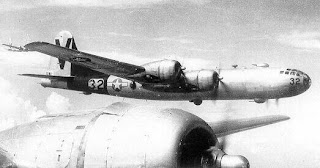 On Erwin’s 18th mission, the squadron was assigned to bomb the Japanese chemical plant at Koriyama, north of Tokyo; the City of Los Angeles was tasked to be the lead bomber. At the rendezvous point, it was Erwin’s job to jettison phosphorous smoke bombs though a tube in the fuselage of the B-29 as the signal for the other planes to form up.
On Erwin’s 18th mission, the squadron was assigned to bomb the Japanese chemical plant at Koriyama, north of Tokyo; the City of Los Angeles was tasked to be the lead bomber. At the rendezvous point, it was Erwin’s job to jettison phosphorous smoke bombs though a tube in the fuselage of the B-29 as the signal for the other planes to form up.
For reason’s unknown, a smoke bomb malfunctioned and exploded in the tube then shot back into the plane striking Erwin in the face. Thick white smoke immediately filled the front of the plane and 1,300 degree phosphorous began to burn Erwin, blinding him, burning off his hair, most of his right ear, part of his nose and large patches of skin.
In addition to Erwin’s wounds, the plane and crew were in mortal danger. Flaming phosphorous was burning through the metal bulkhead. It was now just a question of whether the blinded flight crew would crash into the ocean before the fire reached the bomb bay causing the entire plane to explode in midair.
With tremendous presence of mind, Erwin snatched up the flaming canister and began to work his way forward, pausing painfully to unhook the latch on the navigator’s table, holding the burning bomb between his bare arm and his ribcage to do so. In the process, the white hot “phosphorous burned through his flesh to the bone” according to an Air Force report.
Meanwhile, the pilot and co-pilot were completely blinded by smoke as Erwin inched closer and closer to their position. Once past the navigator’s table, Erwin worked his way forward and threw the phosphorous bomb out the co-pilot’s window.
As the smoke cleared Erwin’s crewmates began to realize what had happened and what Erwin had done. When they saw him, they were horrified. “Are you alright?” one asked. “I’m fine,” Irwin replied. Another crewman had turned a fire extinguisher on Erwin and put out the fire, but the phosphorous continued to burn on and under the skin.
The pilot jettisoned the bomb load and turned for Iwo Jima for an emergency landing as the crew worked to comfort and stabilize Irwin who they knew was dying before their eyes. Irwin never lost consciousness and, as the designated first aid man on the crew, warned them not to administer too much morphine. He even asked, “Is everybody else all right?”
Major General Curtis LeMay, commander of the XXI Bomber Command ordered that the award paperwork for the Medal of Honor be expedited so that the presentation could be made while Irwin was still alive; approval reportedly coming from Washington in record time. There was no Medal of Honor available in the theater, and according to one report, one of Erwin’s squadron mates “appropriated” a Medal of Honor from a display case in Pearl Harbor.
Red Erwin was awarded the Medal of Honor by General LeMay on April 19, 1945 on the Island of Guam. Thirty days after his harrowing mission on the City of Los Angeles, Erwin arrived in Sacramento to continue his miraculous recovery. “I got down to 87 pounds, skin and bones…I didn’t give up.” Erwin told a reporter years later.
Discharged in 1947, Red Erwin underwent 41 surgeries to restore his eye site and the use of one arm. He worked for the Veterans Administration for 37 years, retired with 43.5 years of federal service and received an “outstanding” performance rating every single year. He and his wife raised a son and 3 daughters. Henry Eugene Erwin passed away on January 16, 2002.
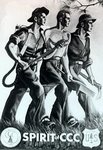
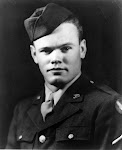





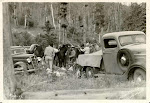
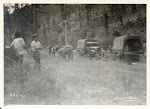
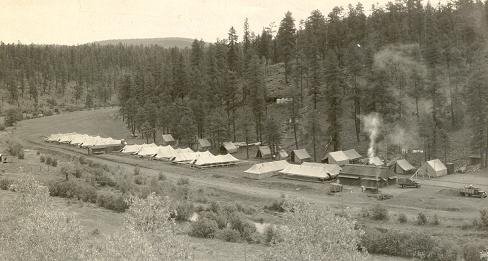


4 comments:
I TOO WAS BORN IN DOCENA, ALABAMA. "RED" ERWIN WAS A CHILDHOOD FRIEND TO MY PARENTS AND RELATIVES. I HAVE ALWAYS ADMIRED HIM AND HE IS THE REASON FOR MY DEEP PATRIOTISM TODAY. I MET HIM A NUMBER OF TIMES. A GREAT AMERICAN.
Thank you for visiting and thank you for posting a comment. You're lucky to have met "Red" and even luckier to have had the wisdom to understand the importance of the meeting - so many of our great citizens live anonymously among us, wanting little more than a peaceful and quiet life - they deserve all the happiness this world has to offer them and our unending gratitude. Thank you again for visiting.
He was actually my cousin. We are all very proud of his accomplishments and he was an amazing man! Thanks for posting this!
Just found this page. Just wanted to say, Red was my father's 1st cousin. I am Robert Erwin's daughter. My father's mother & Red's mother were sisters....and their father's were brothers.....which made Red & my daddy "double 1st cousins". My grandparents were Ruby & Jasper "Newt" Erwin. Red was a kind-hearted, loving individual and my kids treasure knowing the sacrafice he made for our country. We talk about him often.
Post a Comment